The Permit Review Committee, a subcommittee of the Commission on Chicago Landmarks, has approved plans for a 13-story mixed-use development at 311 N Sangamon Street and 310 N Peoria Street in Fulton Market. Located in the northeastern section of the Fulton-Randolph Market District, the site consists of two adjacent properties along W Wayman Street, between N Sangamon Street and N Peoria Street. Marc Realty and investor Relu Stan are behind the development.
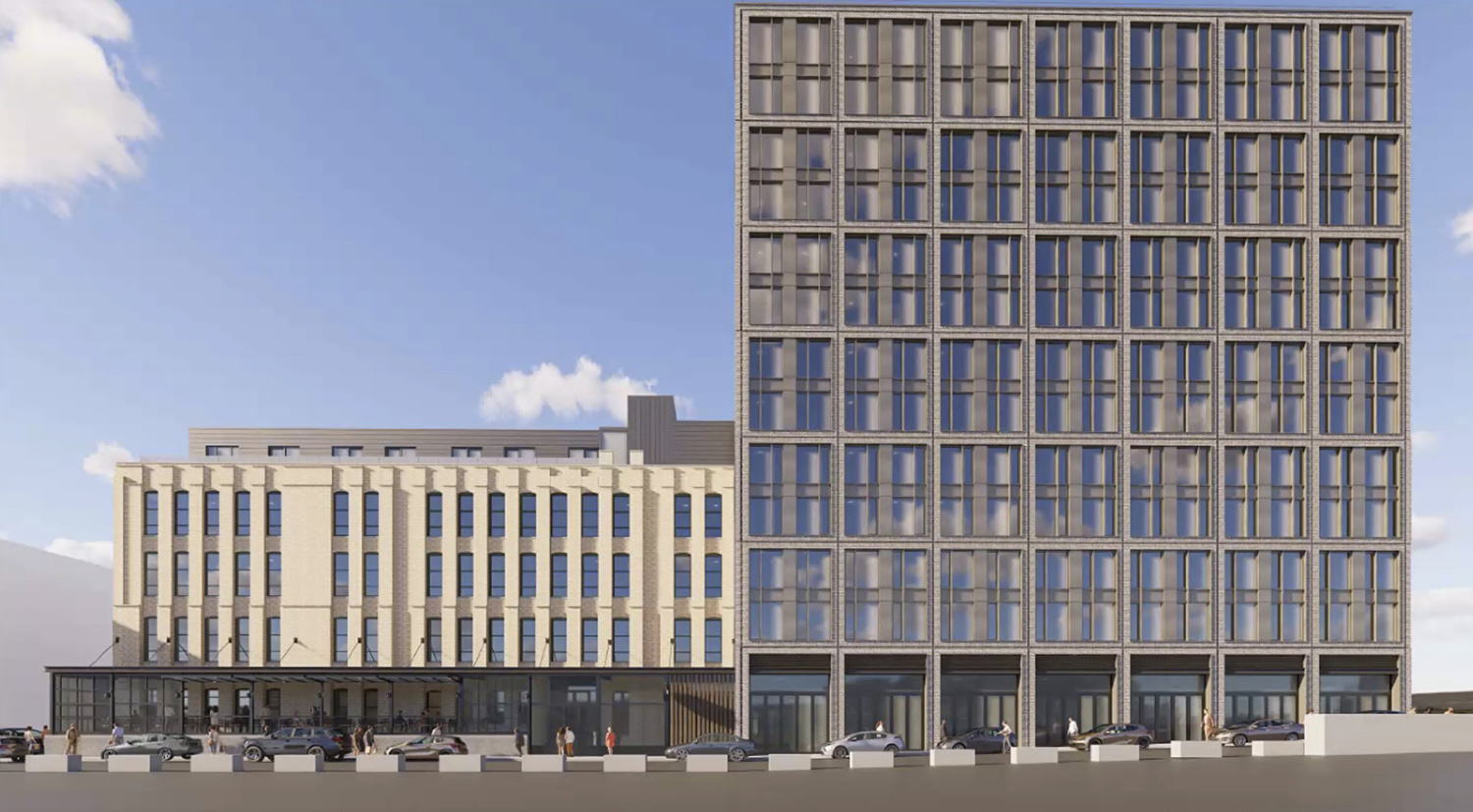
311 N Sangamon Street and 310 N Peoria Street. Rendering by Hirsch MPG
Within the overall development plans, the existing structure at 311 N Sangamon Street will be demolished and replaced by a 13-story hotel tower. At 310 N Peoria Street, the structure will be rehabilitated and renovated into office space with ground-floor restaurant space. Hirsch MPG is the architect behind the design of the project.
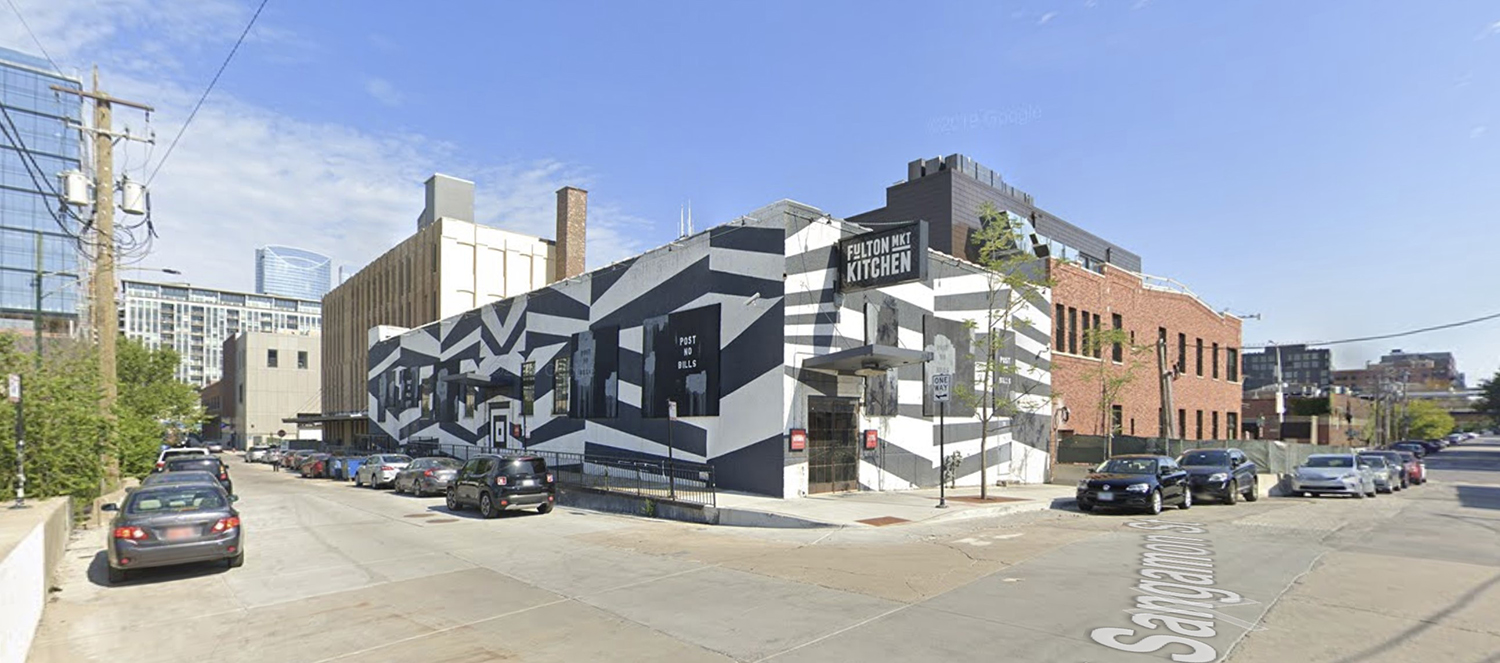
Existing Building at 311 N Sangamon Street via Google Maps
The existing structure at 311 N Sangamon Street is slated for demolition under the development plan. The structure has been substantially altered over its lifespan since it was built in the early 1900s. The exterior facades do not exhibit any substantial architectural features associated with the landmarked district. An original second floor is no longer present and the entirety of the exterior walls is covered in a non-original shotcrete with no indication of historical masonry beneath. Currently vacant, the two-story building has been determined as non-contributing to the historic district, clearing way for its demolition.

North Elevation for 311 N Sangamon Street and 310 N Peoria Street. Drawing by Hirsch MPG
The new structure to occupy the site is expected to rise 149 feet tall. The project will hold a 296-key hotel, with ground-floor commercial space. The main mass of the tower is designed to be clad with masonry and metal panels, with a rooftop enclosure that is clad entirely in metal panels. The building will fill the entire lot, maintaining the historic street wall that is a characteristic of the neighborhood and historic district.
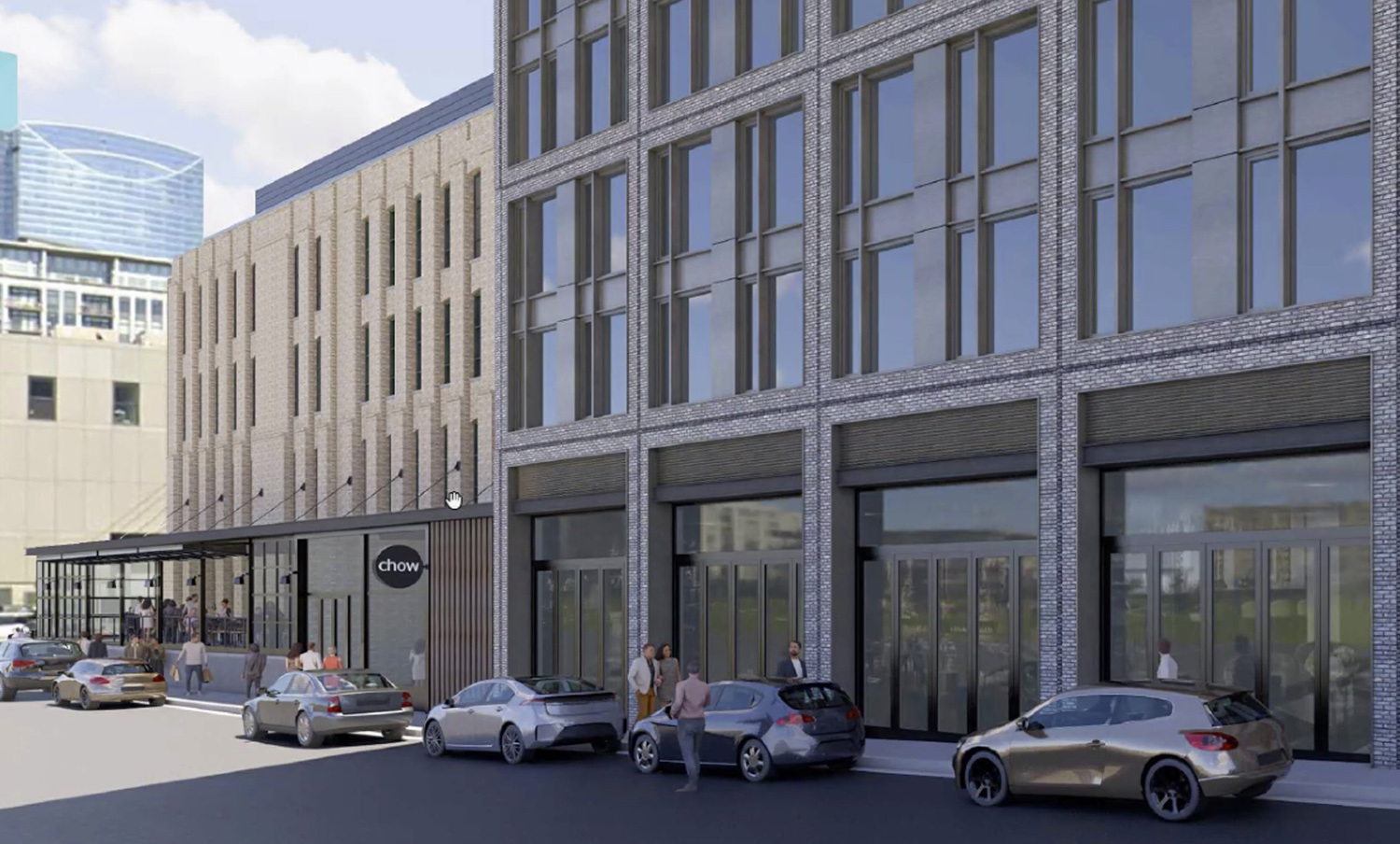
Street View of 311 N Sangamon Street and 310 N Peoria Street. Rendering by Hirsch MPG
Designed to have a contemporary façade solution that complements the surrounding neighborhood, the building’s mass is broken into a grid of vertical piers and horizontal spandrels, referencing the historic warehouse buildings in the district. The northern elevation features a square grid that spans two floors and is bisected horizontally and vertically by metal panels. Each square encompasses four windows, with the window design taking inspiration from the fenestration of the building at 310 N Peoria Street.

View of 311 N Sangamon Street and 310 N Peoria Street. Rendering by Hirsch MPG
The brick lines of the grid consists of light tan brick as a respectful pairing to 310 N Peoria Street, with inset dark grey brick that runs through the center of the brick panels as an accent. The combination of depths and colors gives texture and visual interest to the façade while also drawing inspiration from historic steel casement windows in the district. The southern elevation is made up of three protruding bays with inset light wells that align with the rooftop enclosure.
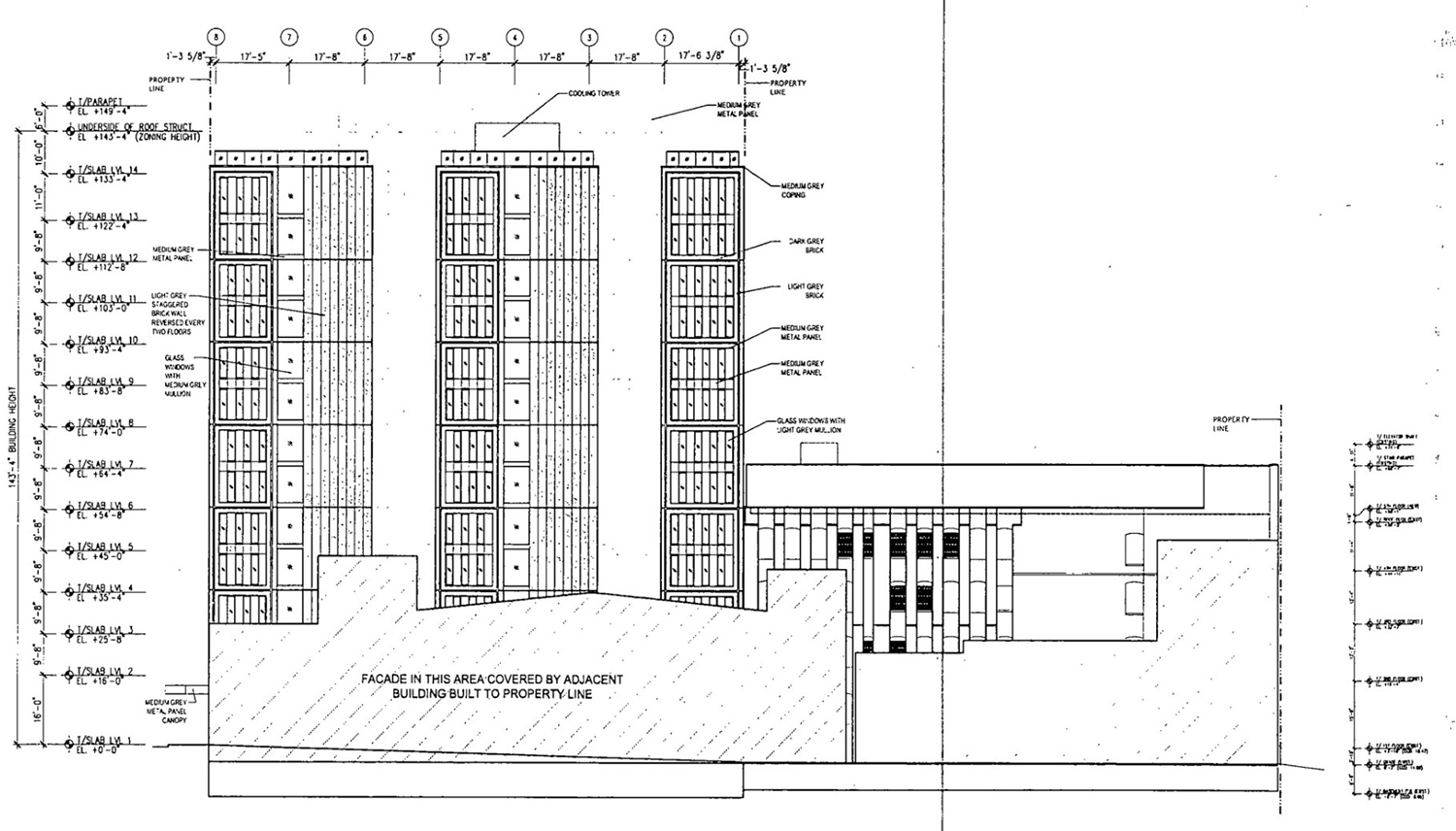
South Elevation for 311 N Sangamon Street and 310 N Peoria Street. Drawing by Hirsch MPG
Entry for the building is located on the western elevation, marked with a metal panel canopy that cantilevers over the sidewalk. The remainder of the ground-floor storefronts are along the northern elevation. These storefronts get taller as you move east since W Wayman Street is sloped. Operable bi-fold window systems will be used, with transom windows and horizontal louvers placed above within the storefronts.
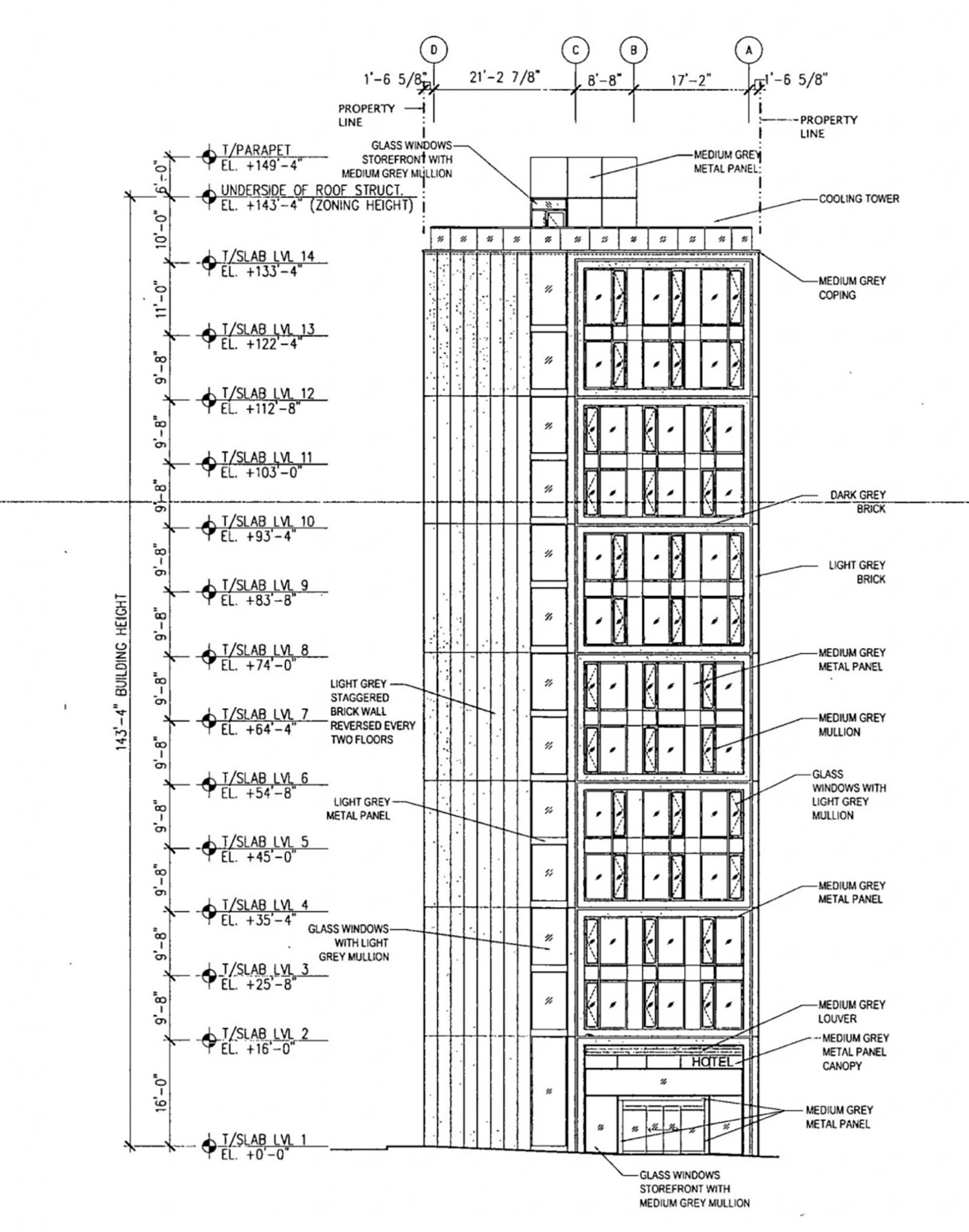
West Elevation for 311 N Sangamon Street and 310 N Peoria Street. Drawing by Hirsch MPG
At 310 N Peoria Street, a building renovation and adaptive reuse is planned. The four-story building was built in 1893 for the Wolf, Sayer & Heller meatpacking and butcher supply company, designed by Adler and Sullivan. The design will convert the ground floor to commercial restaurant space, with office space on the floors above. A connection between this structure and the new hotel tower will be included.
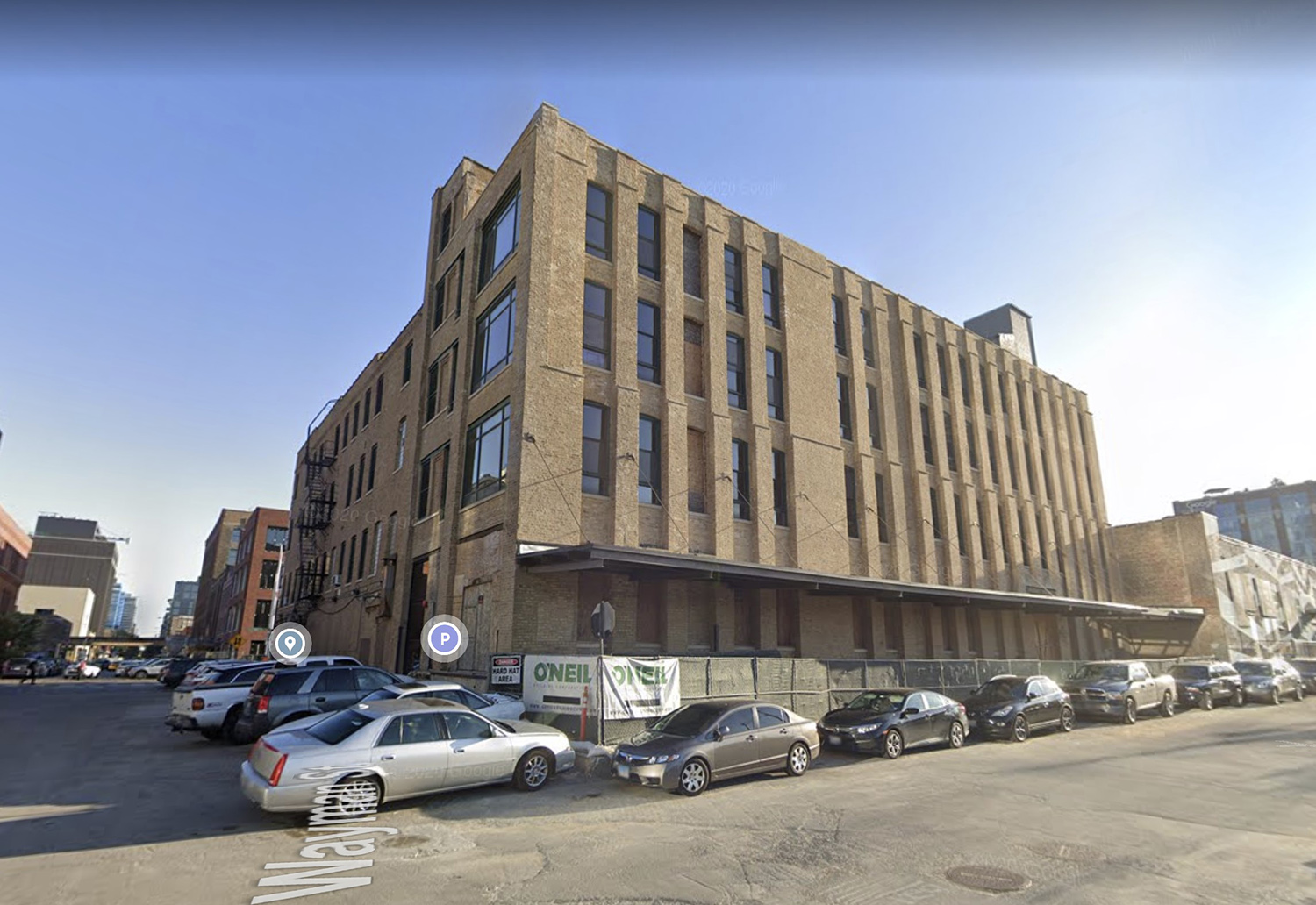
Existing Building at 310 N Peoria Street via Google Maps
The rehabilitation will include the removal of plywood infill for 14 windows on the north façade. Seven of the openings will be restored to original sizes with new double hung windows, while the remaining openings will be turned into doors for the new restaurant space. Upper floor windows that were filled in at one point will be replaced to match the historic existing windows. The existing steel canopy will be lifted as to not bisect the first floor windows as it does currently.

View of Existing Loading Dock and Canopy at 310 N Peoria Street via Google Maps
An elevator enclosure and egress stair enclosure rises above the existing roof height, making a fifth-floor addition possible. The addition will be set back eight feet from the northern and eastern facades, with a rooftop deck occupying those setbacks. At grade, a glass entrance vestibule will enclose a portion of the loading dock on the western side of the northern elevation. A minimal amount of mullions allows for the enclosure to not obstruct views of the ground-floor facade.

Street View of 311 N Sangamon Street and 310 N Peoria Street. Rendering by Hirsch MPG
The existing loading dock will be removed. That loading area will be raised so that the entire area is on one level. The raised dock will be used as an additional year-round seating area for the restaurant. Glass enclosures will enclose the loading dock area, with operable garage doors that can open up to expose the extra seating area to the outdoors.

East Elevation for 311 N Sangamon Street and 310 N Peoria Street. Drawing by Hirsch MPG
The redevelopment of the front loading area was approved on the condition that the glass enclosures surrounding the loading dock seating area would be eliminated from the project scope.
The development plan will be heard by the Chicago Plan Commission later this month, with that approval required for the zoning changes requested for the new construction. The project timeline reveals that groundbreaking is not expected until 2022, with an estimated completion targeted for 2023.
Subscribe to YIMBY’s daily e-mail
Follow YIMBYgram for real-time photo updates
Like YIMBY on Facebook
Follow YIMBY’s Twitter for the latest in YIMBYnews

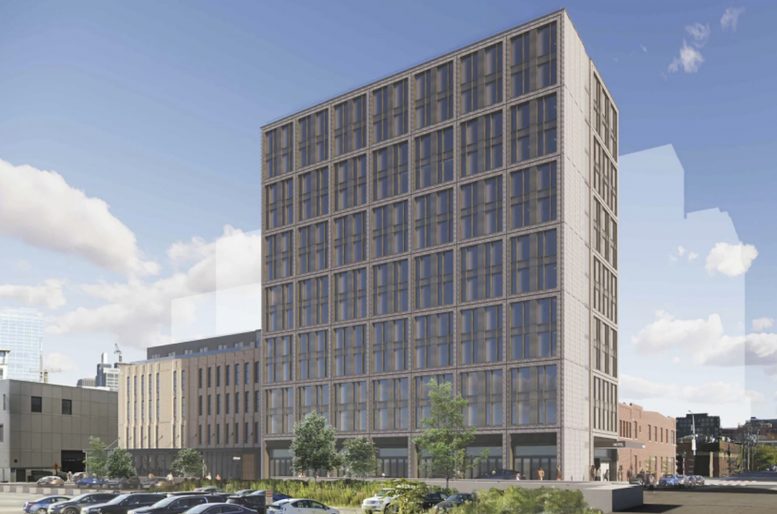
Anyone else think this area is too bullish on hotels? Seems like a new proposal pops up every other week.
because there are so many company HQ’s there, it’s mostly to serve the business world and their travel once COVID abates.
This is an excellent urban upgrade here. Fulton Market absolutely does this the best. If only the rest of the city adopted this model. You can’t beat these infill projects that fully builds out lot-lines to provide a cohesive streetwall and doesn’t seek to wipe out an entire block for a podium tower or pocket plaza/park. Plugging in developments seamlessly with existing neighbors and providing diversity of scale is the absolute highest form of city-building.
If these principles are sustained over the continued transformation Fulton Market will feel completely unique from the rest of Chicago.
As usual, couldn’t agree more with UnionMade. Wish this development model was more popular across the city.
Benefit of hotels is they often have rooftop bars/restaurants (see Cabra), and this part of the city has some of the best skyline views, in my opinion. Excited for this one, especially if the Nealy Foods adaptive renovation comes out as nice as the renderings.